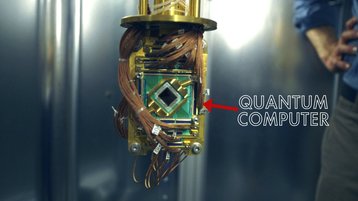A high-energy physics experiment has been completed using a simple quantum device that, if scaled up, could potentially greatly outperform a conventional computer.
Physicists from the Institute for Quantum Optics and Quantum Information at the Austrian Academy of Sciences have used the quantum computer to simulate the spontaneous creation of particle-antiparticle pairs.
To Qubit or not to Qubit
The promise of a true quantum computer lies in its qubits - while classical computers use bits that are in the state of either 0 or 1, quantum bits (qubits) can be in the state of 0, 1 or both (known as superposition). Computers can therefore take advantage of the significantly greater number of possible states.
Even with today’s announcement, quantum computers have yet to reach that level.
“We are not yet there where we can answer questions we can’t answer with classical computers, but this is a first step in that direction,” project researcher Esteban Martinez told Nature.
The team trapped four calcium ions using electromagnetic fields and was able to operate them as qubits under the control of laser pulses.
Four qubits, however, are too few to provide any real advances in computing power, with the challenge lying in scaling the number up into the thousands. Canada’s D-Wave claimed it had built a quantum computer with over 1,000 qubits, but there is a debate about whether the system qualifies as a true quantum computer.
Elsewhere in the world, we have seen heavy investment in quantum computing, with a full breakdown available here.

